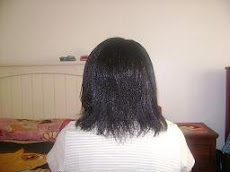This
is a compilation of all of the essential oils that I own. This is background
information so sound decision can be made on the types of oils to have and how
they blend with other essential oils.
**Disclaimer: Essential oils
are very potent and should always be diluted with a carrier oil.
Cedarwood,
Virginia Essential Oil
Botanical
Name: Juniperus Mexicana
Common Method of Extraction: Steam distilled
Parts Used: Wood
Note Classification: Base
Aroma: Soft, woody, sweet balsamic
Largest Producing Countries: USA
Traditional Use: In North America, Texas
Cedarwood has been used for respiratory infections. This oil has also been used
as an insect repellant.
Properties: Antiseptic, antispasmodic,
astringent, circulatory stimulant, diuretic, emmenagogue, expectorant,
insecticide, sedative
Benefits: Acne, arthritis,
bronchitis, coughs, cystitis, dandruff, eczema, insect repellant, nervous
tension, oily skin, psoriasis, respiratory congestion, rheumatism, sinusitis,
stress. Virginia Cedarwood may be diffused into the air as an insect repellant.
Blends Well With: Benzoin, cypress, juniper,
patchouli, rose, sandalwood, vetiver
Of Interest: This oil is used as a
fixative in perfumery. It is also used in the isolation of the sesquiterpene
cedrene.
Safety Data: May cause skin irritation.
---------------------------------------------------------------------------------------------------------------------
Citronella Essential Oil
Botanical Name: Cymbopogon winterianus
Common Method of Extraction: Steam distilled
Parts Used: Grass
Note Classification: Top
Aroma: Rich, fresh, sweet, lemony
Largest Producing Countries: Vietnam, Sri Lanka and Java
Traditional Use: Citronella is used in
perfumery and medicinally to aid with fevers and rheumatic pain. It has also
been used for menstrual and digestive problems. It is more widely known as an
insect repellant.
Properties: Analgesic, antibacterial,
antifungal, antiseptic, antispasmodic, astringent, deodorant, diaphoretic,
diuretic, emmenagogue, febrifuge, fungicidal, insecticide, stimulant,
stomachic, tonic
Benefits: Acne, arthritis, bruises,
colds, exhaustion, excessive perspiration, fatigue, fever, flu, headaches,
infections, insect bites and stings, insect repellant, neuralgia, oily skin,
rheumatism, stomach spasms. Citronella oil can be used to make your own outdoor
candles for those late summer nights.
Blends Well With: Bergamot, cedarwood, citrus
oils, geranium, pine, sandalwood.
Of Interest: Cymbopogon winterianus or
Java citronella has a higher geraniol and citronellol content then Cymbopogon
nardus or Sri Lanka citronella. Because of these constituents Java citronella
is used more in perfumery.
Safety Data: Avoid while pregnant. May
cause skin irritation.
---------------------------------------------------------------------------------------------------------------------
Cinnamon
Leaf Essential Oil
Botanical Name: Cinnamomum zeylanicum
Common Method of Extraction: Steam distilled
Parts Used: Leaves
Note Classification: Middle
Aroma: Flat, warm, earthy spice
Largest Producing Countries: Sri Lanka, India, and
Madagascar
Traditional Use: Cinnamon leaf has been used
for culinary and medicinal purposes. The leaf oil has a higher eugenol content
then the bark oil, which increases its analgesic properties.
Properties: Analgesic, antibacterial,
anticlotting, anti-inflammatory, antiseptic, antispasmodic, carminative,
insecticide, stimulant, stomachic
Benefits: Arthritis, bruises, colds,
cough, diarrhea, flatulence, infection, insect bites, nervous exhaustion,
rheumatism, slow circulation, sore muscles, stomach cramps, stress, toothache.
Cinnamon is a good addition to a blend for disinfecting the air.
Blends
Well With: Benzoin, bergamot, cardamom, clove, frankincense, ginger,
grapefruit, lemon, mandarin, marjoram, nutmeg, orange, peppermint, peru balsam,
petitgrain, rose, vanilla, ylang ylang
Of Interest: Cinnamon has been a highly
prized commodity since antiquity and is one of the most recognizable scents in
the world. The chemical breakdown of Cinnamon leaf oil is similar to that of
Clove bud.
Safety Data: Avoid while pregnant. May
cause skin irritation.
--------------------------------------------------------------------------------------------------------------------
Eucalyptus
Essential Oil
Botanical Name: Eucalyptus globulus
Common Method of Extraction: Steam distilled
Parts Used: Leaves and twigs
Note Classification: Top
Aroma: Fresh, penetrating, woody,
camphoraceous
Largest Producing Countries: Australia, Brazil, and
Spain
Traditional Use: Eucalyptus is one of the
oldest native medicines used in Australia. It is known now for its use in
inhalants and vapor rubs, and as a household disinfectant and cleaner.
Properties:
Analgesic, antibacterial, antifungal, antineuralgic, antirheumatic, antiseptic,
antispasmodic, antiviral, decongestant, deodorant, depurative, diuretic,
expectorant, febrifuge, stimulant, vermifuge, vulnerary
Benefits: Asthma, blisters,
bronchitis, bruises, burns, candida, catarrh, chills, colds, cough, cystitis,
fever, headache, influenza, insect bites, lack of concentration, measles,
mental exhaustion, muscular aches and pains, neuralgia, respiratory infection,
rheumatism, sinusitis, skin infections, skin ulcers, slow circulation, sore
throats, sprains, throat infections, viral infections, wounds. Eucalyptus is
often added to inhalations, oils, and ointments for respiratory infections and
congestion. The properties that help with these ailments include antispasmodic,
expectorant, decongestant, and antiviral. The antiviral and antibacterial
actions of this oil can be taken advantage of by adding it to a disinfectant
blend for a diffuser to cleanse the air.
Blends Well With: Cedarwood, chamomile,
cypress, geranium, ginger, grapefruit, juniper, lavender, lemon, marjoram, peppermint,
pine, rosemary, thyme
Of Interest: The word eucalyptus is
derived from Greek meaning "well covered". This refers to part of the
calyx that initially covers the flower.
Safety Data: Avoid while pregnant and
with homeopathics. May cause skin irritation.
---------------------------------------------------------------------------------------------------------------------
Frankincense
Essential Oil
Botanical Name: Boswellia carterii
Common Method of Extraction: Steam distilled
Parts Used: Resin
Note Classification: Base
Aroma: Fresh, woody, spicy,
balsamic with a citrus top note
Largest Producing Countries: India, North Africa, and
Europe
Traditional Use: Frankincense has a long
history as incense. It was burned by the Egyptians and is used in many
religious ceremonies. Traditionally it has also been used for skin ailments
from acne to wound healing.
Properties: Analgesic, anti-arthritic,
antifungal, anti-inflammatory, antioxidant, antiseptic, astringent,
carminative, digestive, diuretic, expectorant, sedative, tonic, vulnerary
Benefits: Acne, anxiety, asthma,
blemishes, bronchitis, colds, coughs, dry skin, flu, nervousness, rheumatism,
scars, skin ailments, stress, ulcers, urinary tract infections, wrinkles,
wounds. To take advantage of some of the skin healing properties of this oil it
may be added to skin creams or toners.
Blends Well With: Bergamot, black pepper,
camphor, cinnamon, cypress, geranium, grapefruit, lavender, lemon, mandarin,
neroli, orange, palmarosa, patchouli, pine, rose, sandalwood, vetiver, ylang ylang
Of Interest: Frankincense has many other
names that it is known as. Most commonly you will see it as frankincense,
olibanum, or boswellia.
Safety Data: Generally considered safe.
---------------------------------------------------------------------------------------------------------------------
Jasmine Absolute Oil
Botanical Name: Jasminum grandiflorum
Common Method of Extraction: Solvent extracted (Ethyl
alcohol)
Parts Used: Flowers
Note Classification: Middle
Aroma: Warm, rich, deeply floral
Largest Producing Countries: India, France, Italy, and
Egypt
Traditional Use: Jasmine has a long history
in perfumery including Cleopatra and Louis XVI. It has also been used for
headaches and skin problems.
Properties: Analgesic, antidepressant,
anti-inflammatory, aphrodisiac, carminative, emmenagogue, expectorant, tonic
Benefits: Bronchial spasms, cough,
depression, dysmenorrhea, eczema, headache, labor pains, laryngitis, memory
stimulation, menstrual problems, prostate problems, skin irritation. Try adding
Jasmine to a blend to use while studying, and see if it helps with your memory.
Blends Well With: Bergamot, clary sage,
clove, coriander, ginger, grapefruit, lemon, mandarin, neroli, orange,
palmarosa, patchouli, petitgrain, rose, sandalwood, ylang ylang
Of Interest: It takes approximately
2,000 lbs of jasmine flowers to produce 1 lb of oil. This oil will darken with
age.
Safety Data: Avoid while pregnant. Not
for internal use.
---------------------------------------------------------------------------------------------------------------------
Lavender Essential Oil
Botanical Name: Lavandula angustifolia
Common Method of Extraction: Steam distilled
Parts Used: Flowering tops
Note Classification: Middle
Aroma: Sweet, floral, herbaceous
Largest Producing Countries: Bulgaria, France, and
Ukraine
Traditional Use: Lavender oil is known for
its skin healing properties and its use as a sedative. The herb has been used
for strewing, and the flowers are used as an aromatic.
Properties: Analgesic, antibacterial,
antidepressant, anti-inflammatory, antimicrobial, antirheumatic, antiseptic,
antispasmodic, aromatic, carminative, cholagogue, deodorant, diuretic,
emmenagogue, hypotensive, insecticide, nervine, sedative, stimulant, stomachic,
vulnerary
Benefits: Acne, allergies,
amenorrhea, asthma, athlete’s foot, bruises, burns, colic, conjunctivitis,
cystitis, dandruff, depression, dermatitis, earache, eczema, flatulence,
halitosis, headache, hypertension, indigestion, infection, inflammations,
insect bites and stings, insomnia, laryngitis, leucorrhea, migraine, nausea,
nervous tension, neuralgia, psoriasis, rashes, rheumatism, scars, slow
digestion, sore muscles, sprains, stress, sunburn, teething, toothache, ulcers,
wound. Lavender oil is a good addition to most skin care products. For bug
bites and burns the oil is generally safe to apply neat to the affected area. A
skin patch test should be performed before using any essential oil directly on
the skin.
Blends Well With: Bergamot, black pepper,
cedarwood, chamomile, clary sage, clove, cypress, eucalyptus, geranium,
grapefruit, juniper, lemon, lemongrass, mandarin, marjoram, oakmoss, palmarosa,
patchouli, peppermint, pine, ravensara, rose, rosemary, tea tree, thyme,
vetiver
Of Interest: The name “lavender” is
derived from the Latin lavare, meaning, “to wash”. Known as one of the seven polyvalents
(effective against many toxins), which are applicable to many ailments. Greeks and Romans perfumed their bathwater
with lavender, burned lavender incense to appease their wrathful gods, and
believed the scent of lavender to be soothing to untamed lions and tigers.
Safety Data: Generally considered safe.
---------------------------------------------------------------------------------------------------------------------
Lemon
Essential Oil
Botanical Name: Citrus limon
Common Method of Extraction: Cold pressed
Parts Used: Fruit peel
Note Classification: Top
Aroma: Clean, sugary citrus,
slightly sour
Largest Producing Countries: Italy and USA
Traditional Use: All parts of the lemon have
used around the house and medicinally. The oil has been used around the house
as a cleaning agent, and medicinally it has a history of stimulating the
digestive system.
Properties: Antibacterial,
antidepressant, antifungal, anti-inflammatory, antimicrobial, antirheumatic,
antiseptic, antispasmodic, astringent, carminative, digestive, diuretic,
hepatic, hypotensive, laxative, sedative, vermifuge
Benefits: Acne, anemia, arthritis,
asthma, candida, chilblains, colds, constipation, depression, detoxification,
digestion, fever, general fatigue, herpes, indigestion, infections, insect
bites, liver congestion, mouth ulcers, oily skin, rheumatism, slow circulation,
sore throat, varicose veins, warts, wounds, wrinkles. Lemon has many
applications in the bathroom. It may be used as a disinfectant to clean
surfaces, blended into a mouthwash for its antibacterial properties, or blended
into an air freshener.
Blends Well With: Benzoin, chamomile, cistus,
elemi, eucalyptus, fennel, frankincense, geranium, juniper, lavender, neroli,
oakmoss, rose, sandalwood, ylang ylang
Of Interest: Lemons are harvested while
they are still green to yield a higher quality oil. It takes over 3,000 lemons
to produce 1 kilo (2.2 lbs) of expressed oil.
Safety Data: May cause skin irritation.
Phototoxic.
---------------------------------------------------------------------------------------------------------------------
Orange,
Sweet Essential Oil
Botanical Name: Citrus sinensis
Common Method of Extraction: Cold pressed
Parts Used: Fruit peel
Note Classification: Top
Aroma: Sweet, sugary, and citrus
Largest Producing Countries: USA, Brazil, and Italy
Traditional Use: Known as an uplifting oil,
it is also used to aid digestive upsets. Orange oil is often found in household
cleaners.
Properties: Anticoagulant,
antidepressant, anti-inflammatory, antiseptic, antispasmodic, bactericidal,
carminative, cholagogue, digestive, diuretic, expectorant, fungicidal,
hypotensive, stimulant, stomachic, tonic
Benefits: Asthma, colds, cough,
depression, flatulence, hypertension, indigestion, infections, insomnia, muscle
aches and pains, slow circulation, stress, tension, wounds. To use this oil for
its uplifting properties it may be added to a bath (hand, foot, or whole), or
diffused into the air.
Blends Well With: Basil, bergamot, black
pepper, cinnamon, clary sage, clove, coriander, eucalyptus, frankincense,
geranium, ginger, grapefruit, jasmine, juniper, lavender, lemon, litsea cubeba,
marjoram, myrrh, neroli, nutmeg, patchouli, petitgrain, rose, sandalwood, vetiver,
ylang ylang
Of Interest: Sweet orange oil contains
about 90% limonene, which is in many household cleaners. Because of this sweet
orange oil is used as a earth friendly alternative to many common household
cleaners.
Safety Data: Generally considered safe.
---------------------------------------------------------------------------------------------------------------------
Peppermint
Essential Oil
Botanical Name: Mentha piperita
Common Method of Extraction: Steam distilled
Parts Used: Flowering plant
Note Classification: Top
Aroma: Fresh, very minty, hot,
herbaceous, with a vegetative back note
Largest Producing Countries: Hungary, USA, and Egypt
Traditional Use: Has many culinary and
pharmaceutical uses. It is also used for its soothing qualities on the
digestive system.
Properties: Analgesic, anesthetic
(topical), antibacterial, anti-inflammatory, antifungal, antimicrobial,
antiseptic, antispasmodic, astringent, carminative, cholagogue, cordial,
digestive, emmenagogue, expectorant, febrifuge, insecticide, nervine, sedative,
stimulant, stomachic, vasoconstrictor, vermifuge
Benefits: Acne, asthma, bronchitis,
cholera, colds, cough, cramps, dermatitis, diarrhea, exhaustion, fainting,
fever, flatulence, flu, gaseous indigestion and irritated colon, halitosis,
headache, hysteria, indigestion, insect bites, kidney stones and gallstones,
mental fatigue, migraine, motion sickness, mouth or gum infections, muscular
pain, nausea, nerve pain, nervous disorders, neuralgia, palpitations, poor
circulation, respiratory disorders, sinusitis, toothache, travel sickness,
vertigo, vomiting. DIffusing peppermint into the air may help with many
ailments, from headaches to an upset stomach.
Blends Well With: Basil, benzoin, black
pepper, cypress, eucalyptus, geranium, grapefruit, juniper, lavender, lemon,
marjoram, niaouli, pine, ravensara, rosemary, tea tree
Of Interest: Mild climate stress in the
growing conditions of the plant increases the oil content and sesquiterpene
levels in the oil.
Safety Data: Avoid in epilepsy and while
pregnant. May cause skin irritation. Avoid with homeopathics.
Rosemary
Essential Oil
Botanical Name: Rosmarinus officinalis
Common Method of Extraction: Steam distilled
Parts Used: Flowering tops
Note Classification: Middle
Aroma: Strong, fresh, camphor-like
and with a woody-balsamic undertone
Largest Producing Countries: Spain, France, and Tunisia
Traditional Use: Best known for its aid in
memory and hair loss. It is also considered a symbol of love, and the sprigs
have been traditionally used in wedding ceremonies.
Properties: Analgesic, antiarthritic,
antibacterial, antidepressant, antioxidant, antirheumatic, antiseptic, antispasmodic,
aphrodisiac, astringent, carminative, cholagogue, cordial, decongestant,
diaphoretic, digestive, diuretic, emmenagogue, expectorant, fungicidal,
hepatic, hypertensive, nervine, restorative, rubefacient, stimulant, stomachic,
sudorific, tonic, vermifuge, vulnerary
Benefits: Acne, amenorrhea,
arthritis, asthma, bronchitis, colds, colitis, constipation, coughs, dandruff,
dermatitis, diarrhea, dysmenorrhea, eczema, fainting, flatulence, flu, fluid
retention, greasy hair, hangovers, headache, hysteria, insect repellant,
jaundice, leucorrhea, lice, memory loss, mental fatigue, migraine, muscle aches
and pains, nervous disorders, neuralgia, rheumatism, scabies, sinus problems,
slow circulation, sore muscles, tonic, varicose veins, whooping cough, wounds.
Rosemary oil has many applications. Diffusing the oil into the air will aid
memory and disinfect the room. Using the oil in a massage oil may help with
nasal congestion and sore muscles.
Blends Well With: Basil, bergamot, black
pepper, cedarwood, cinnamon, citronella, clary sage, elemi, eucalyptus ,
frankincense, geranium, grapefruit, lavender, lemon, litsea cubeba, mandarin,
marjoram, niaouli, oregano, peppermint, petitgrain, pine, ravensara, tea tree,
thyme
Of Interest: Rosmarinus is Latin for dew
(ros) of the sea (marinus).
Safety Data: Avoid in epilepsy,
hypertension, and while pregnant. Avoid with homeopathics.
---------------------------------------------------------------------------------------------------------------------
Tea Tree Essential Oil
Botanical Name: Melaleuca alternifolia
Common Method of Extraction: Steam distilled
Parts Used: Leaves and twigs
Note Classification: Middle
Aroma: Warm, Fresh,
spicy-camphoraceous
Largest Producing Countries: Australia and Kenya
Traditional Use: Widely known for its
healing properties for the skin. Tea tree oil is used for anything from bug
bites to sunburns.
Properties: Analgesic, antibacterial,
antifungal, anti-inflammatory, antimicrobial, antiparasitic, antiseptic,
antiviral, decongestant, deodorant, diaphoretic, expectorant, fungicidal,
immune stimulant, insecticide, vulnerary
Benefits: Abscess, acne, asthma,
blisters, bronchitis, burns, candida, catarrh, chicken pox, cold sores, colds,
coughs, cystitis, dandruff, ear and nose infections, fever, flu, fungal
infections, herpes, immune system deficiencies, infectious illnesses, insect
bites, oily skin, respiratory problems, sinusitis, skin rashes, sunburn,
thrush, tooth and gum infections, vaginal infections, viral infections, warts,
whooping cough, wounds. Tea tree makes a great addition to most skin care
products. A simple way to use it is adding the oil to aloe vera gel.
Blends Well With: Basil, bergamot, black
pepper, chamomile german, clary sage, clove, cypress, eucalyptus, geranium,
juniper, lavender, lemon, marjoram, nutmeg, oakmoss, oregano, peppermint, pine,
ravensara, rosemary, thyme, ylang ylang
Of Interest: In World War ll cutters and
producers of tea tree were exempt from military service until enough essential
oil had been accumulated. It was issued to each soldier and sailor for them to
treat tropical infections and other problems of warfare, including wounds.
Safety Data: May cause skin irritation.
Not for internal use.
---------------------------------------------------------------------------------------------------------------------
Ylang Ylang Essential Oil
Botanical Name: Cananga odorata
Common Method of Extraction: Steam distilled
Parts Used: Flower
Note Classification: Base
Aroma: Rich, sweet floral
Largest Producing Countries: Comoro Islands and
Madagascar
Traditional Use: Used throughout the
fragrance industry. Ylang ylang is also known for its sedative properties.
Properties: Antibacterial,
antidepressant, antifungal, anti-inflammatory, antiseptic, antispasmodic,
aphrodisiac, cell proliferant, disinfectant, expectorant, nervine, sedative,
vulnerary
Benefits: Acne, allergies, anger,
candida, colds, cough, depression, fever, headache, hysteria, insect bites,
insomnia, muscle aches and pains, nervous tension, scars, sinus infection,
stress, tension, thrush, tinea, wounds. Diffusing this oil may help ease the
tension in a room.
Blends Well With: Bergamot, chamomile, clary
sage, clove, eucalyptus lemon, ginger, grapefruit, jasmine, lemon, litsea
cubeba, mandarin, neroli, opopanax, orange, palmarosa, patchouli, peru balsam,
petitgrain, rose, rosewood, sandalwood, tuberose, vetiver
Safety Data: Avoid while pregnant.






